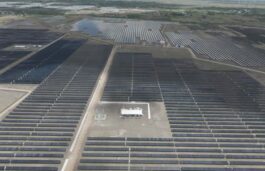
Solar tariffs are deflationary. Prices have fallen by 75% in seven years in India, and in 2020 solar tariffs hit record lows, writes Vibhuti Garg, Energy Economist and Lead India at Institute for Energy Economics and Financial Analysis (IEEFA).
From 2019 to the first quarter of 2020, most of India’s newly-auctioned solar projects saw tariffs in the range of Rs2.5-2.87/kilowatt hour (kWh). Then in February 2020, the Ministry of New and Renewable Energy (MNRE) removed ceiling tariffs for all new solar and wind tenders to hasten tender activity and capacity allocation. From Quarter 2 of 2020, prices were in the range of Rs1.99-2.97/kWh, with bids thereby hitting the new record low tariff.
The reasons for such low tariffs were access to low cost financing (cheaper interest rates) by international developers based out of Saudi Arabia (Aljomaih Energy and Water Co.) and Singapore (Sembcorp) as well as government entities like NTPC which can secure debt at a rate of 7-7.5%. And since they can source funds at lower rates, their return on equity expectation is also lower. Also, these tenders are likely to be exempted from the Safeguard Duty (SGD) and Basic Customs Duty (BCD) on solar cell and module imports. Another key factor was power purchase assurance for the developers, for example, the power sale agreement (PSA) between the intermediary procurer, Solar Energy Corporation of India (SECI), and the buying entity, Rajasthan power distribution company (Discom) Rajasthan Urja Vikas Nigam Ltd. (RUVNL). The other tender was issued by Gujarat Discom, Gujarat Urja Vikas Nigam Ltd. (GUVNL).
In 2021, however, solar tariffs saw an upward trend. In January and February, the lowest tariffs discovered in auctions were Rs2.22/kWh and Rs2.25/kWh, by Torrent Power Ltd. (TPL) and NTPC Ltd. The tariff increases could be attributed to lack of participation by international developers like Aljomaih Energy and Water Co. and Sembcorp. Moreover, module prices increased from US$0.20/Wp in July 2020 to US$0.22-0.23/Wp in January 2021, causing solar prices to increase. Further, module suppliers are now selling modules at FOB (free on Board) prices instead of CIF (cost, insurance, and freight) prices, which is also impacting solar prices in India.
Then in March, the Government of India announced it will impose a 40% basic customs duty (BCD) on solar modules and 25% on solar cells from 1 April 2022 in a move to promote domestic manufacturing. The imposition of BCD is likely to increase solar tariffs by approximately 25%. The lowest tariff delivered in the first solar auction result after the BCD announcement – GUVNL’s 500MW auction in Gujarat – was Rs2.22/kWh, a 21 paisa (12%) increase per kWh from the previous GUVNL tender under the same conditions.
Lower prices are favourable for renewable energy growth. However, aggressive tariffs come with risks, and developers need to properly factor these risks into their bids. With improved module technology, generation will increase. Another factor that will pull down solar prices is access to low cost financing. On the other hand, a rise in module costs due to various global demand and supply factors and floating interest rates that change in line with Reserve Bank of India (RBI) guidelines could push prices upwards.





























